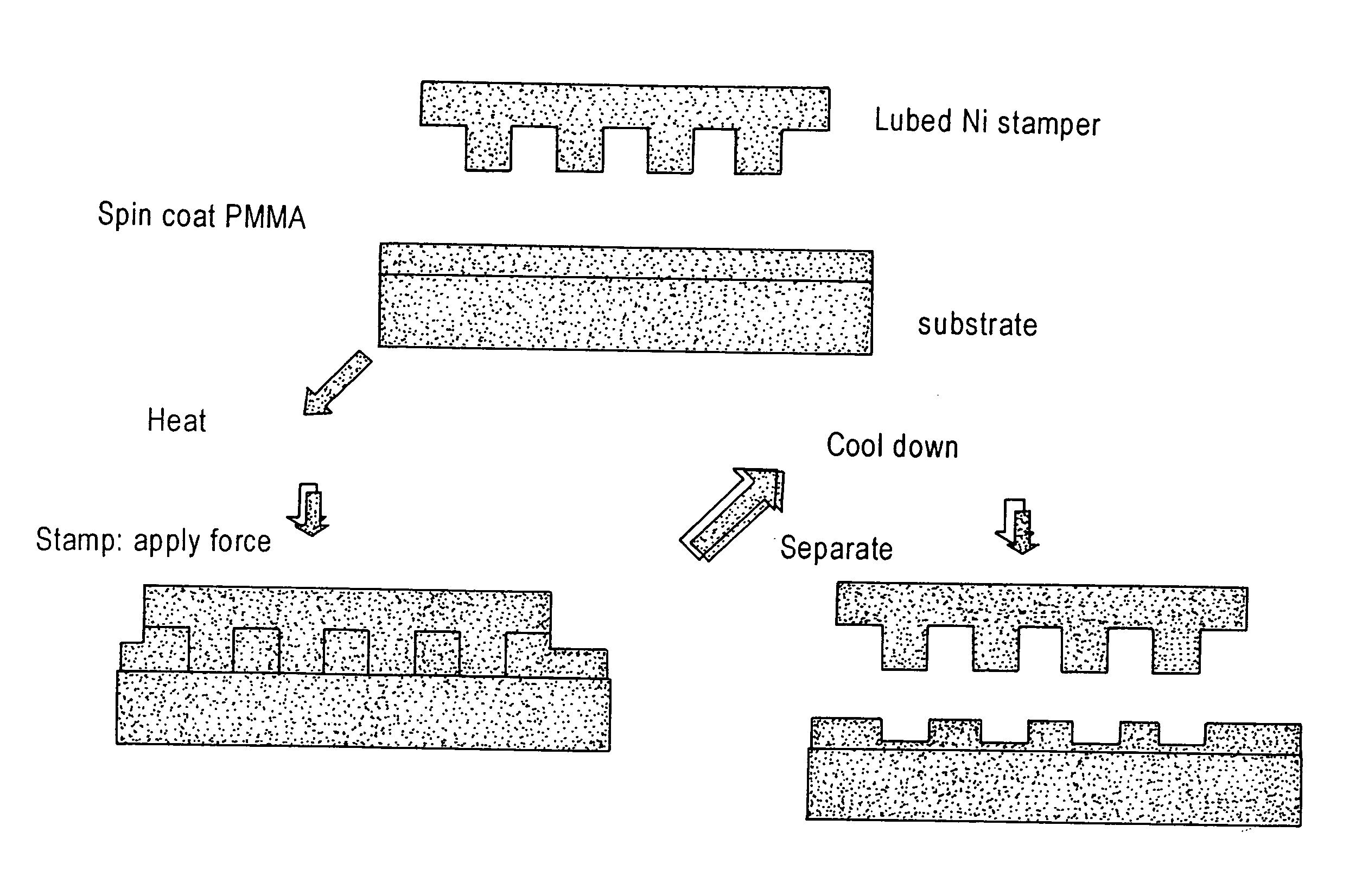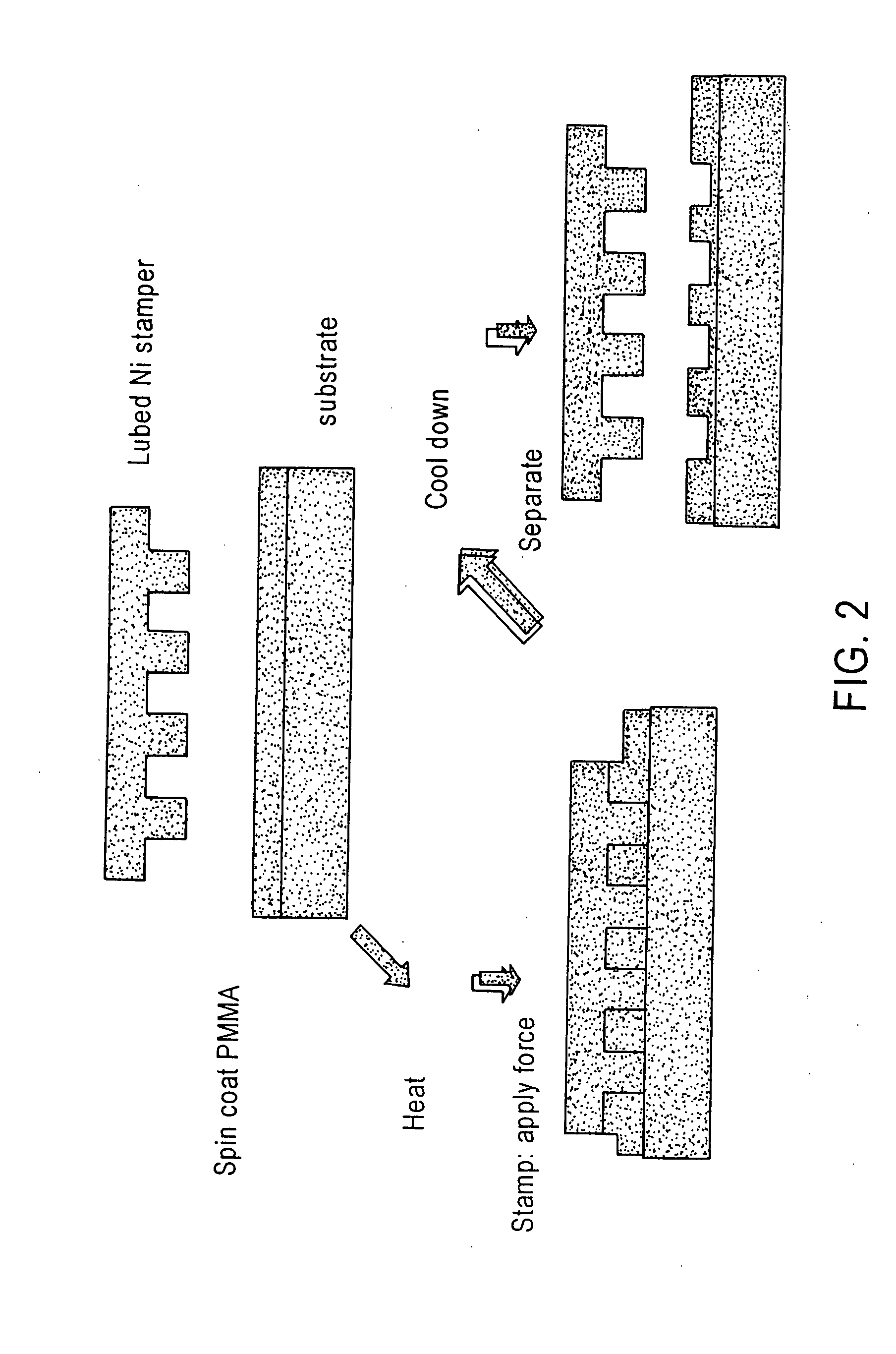Surface modified stamper for imprint lithography
a surface modified and stamping technology, applied in dough embossing machines, magnetic recording, record information storage, etc., can solve the problems of non-uniform replication and sticking of thermoplastic polymer materials to the molding layer, uneven uniformity and sticking difficulties, and degradation of the dimensional integrity of the imprinted pattern or feature, etc., to achieve peeling of the imprinted layer, reducing the effect of releasing properties, and minimizing the effect of removing
- Summary
- Abstract
- Description
- Claims
- Application Information
AI Technical Summary
Benefits of technology
Problems solved by technology
Method used
Image
Examples
Embodiment Construction
[0023] The present invention addresses and solves problems and difficulties such as degradation of replication quality due to resist deformation, peeling, and poor release, attendant upon the use of thermal imprint lithography for pattern definition in a workpiece surface. The present invention is particularly applicable to the fabrication of hard disk substrates with integrally formed servo patterns having sub-micron features, while maintaining automated manufacturing technology for pattern formation by imprint lithography. Further, the methodology and means afforded by the present invention enjoy diverse utility in the imprint lithographic patterning of a variety of substrates and workpieces.
[0024] The present invention addresses and solves problems attendant upon the use of a stamper and substrates in performing imprint lithography, e.g., nanoimprint lithography for forming submicron-dimensioned patterns and features in substrate surfaces used in magnetic recording media manufac...
PUM
| Property | Measurement | Unit |
|---|---|---|
| thickness | aaaaa | aaaaa |
| thickness | aaaaa | aaaaa |
| depths | aaaaa | aaaaa |
Abstract
Description
Claims
Application Information
 Login to View More
Login to View More - R&D
- Intellectual Property
- Life Sciences
- Materials
- Tech Scout
- Unparalleled Data Quality
- Higher Quality Content
- 60% Fewer Hallucinations
Browse by: Latest US Patents, China's latest patents, Technical Efficacy Thesaurus, Application Domain, Technology Topic, Popular Technical Reports.
© 2025 PatSnap. All rights reserved.Legal|Privacy policy|Modern Slavery Act Transparency Statement|Sitemap|About US| Contact US: help@patsnap.com



